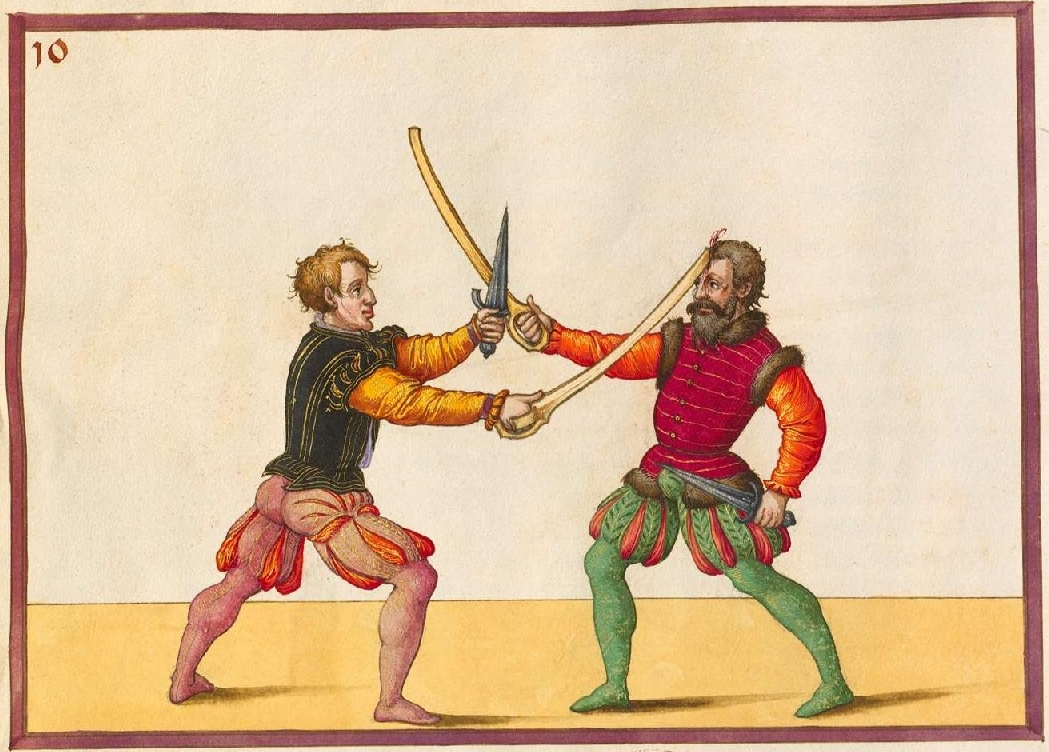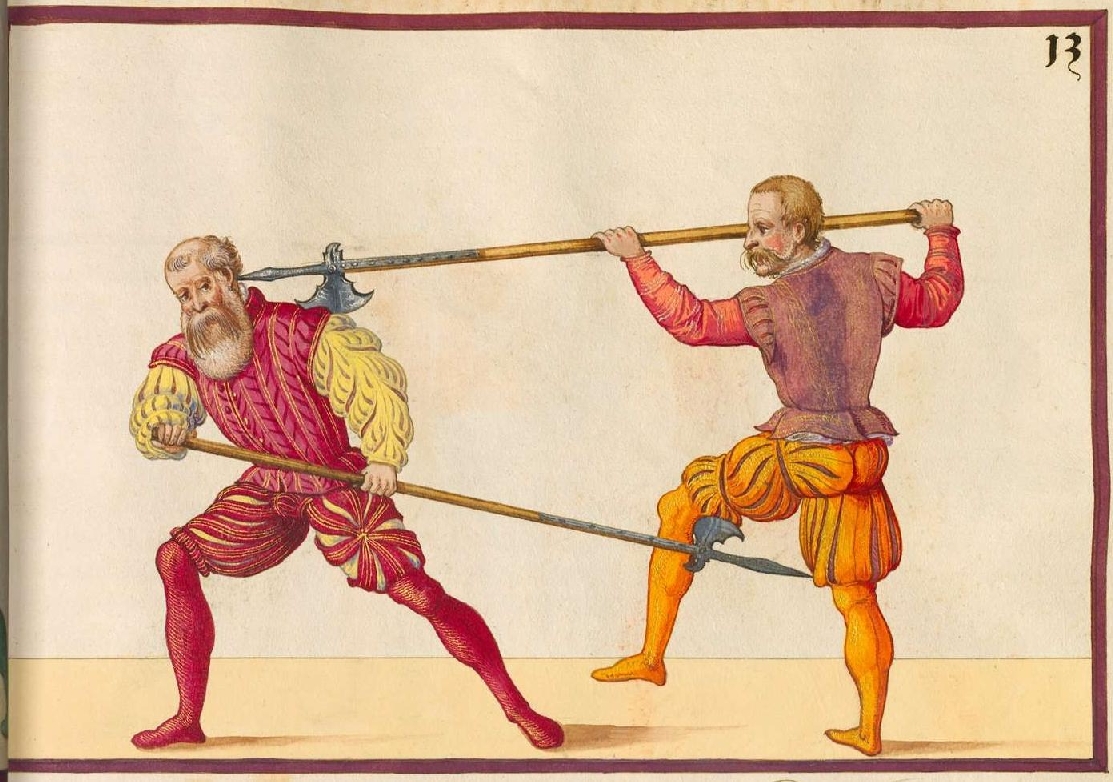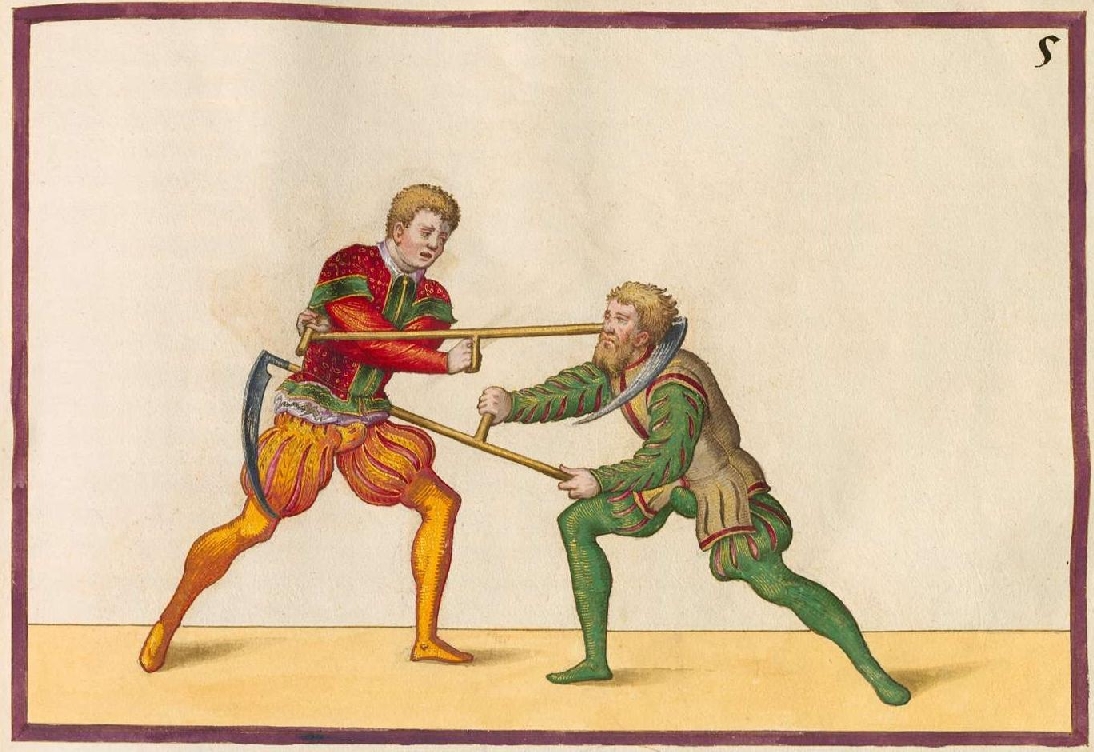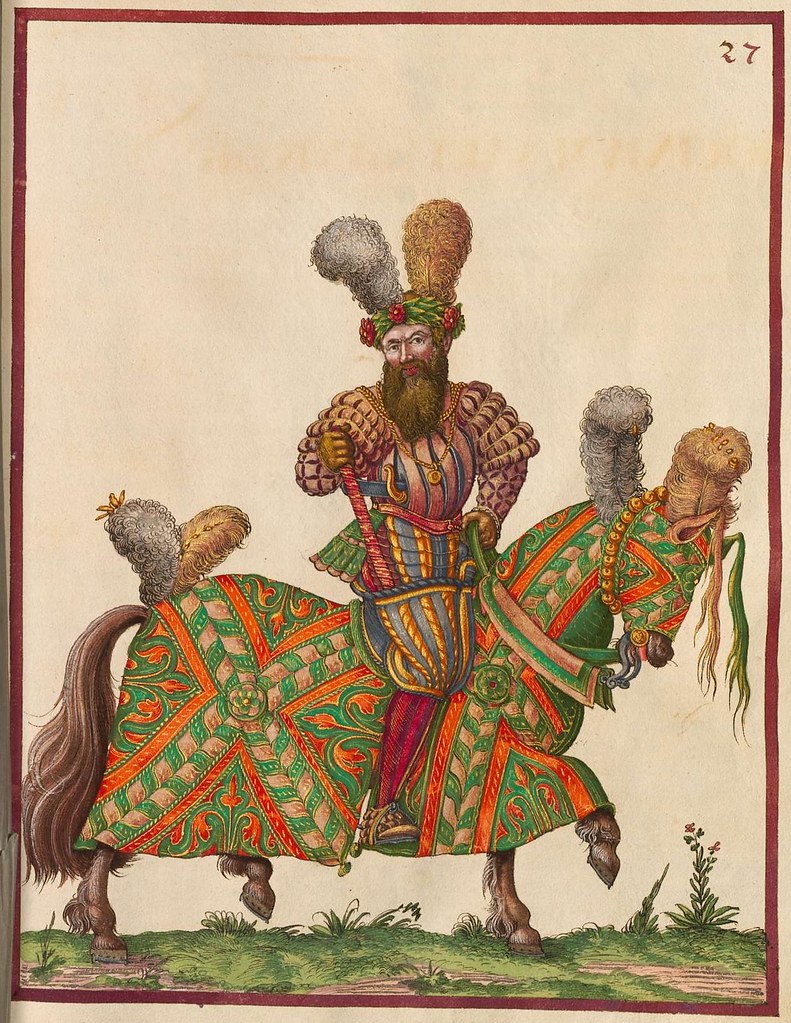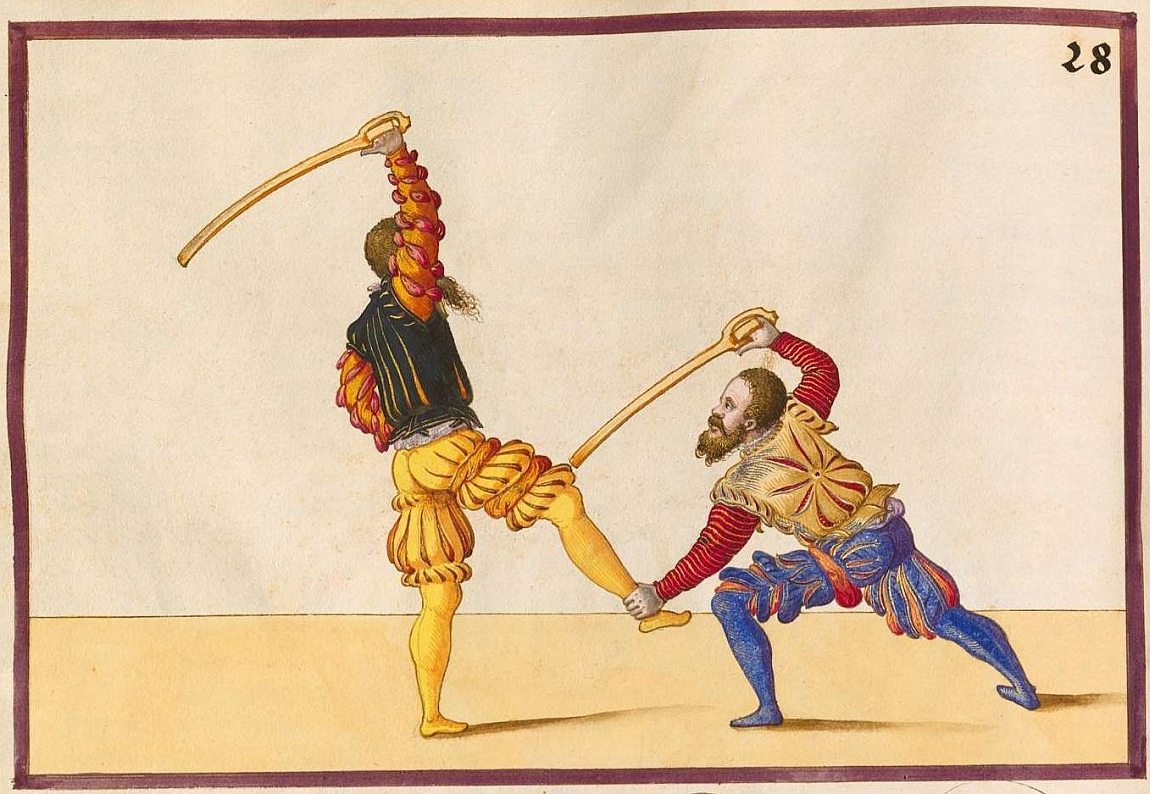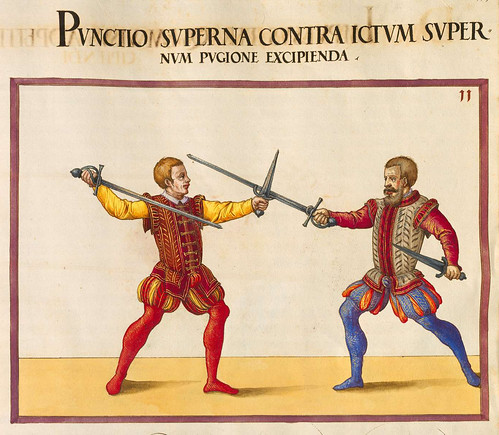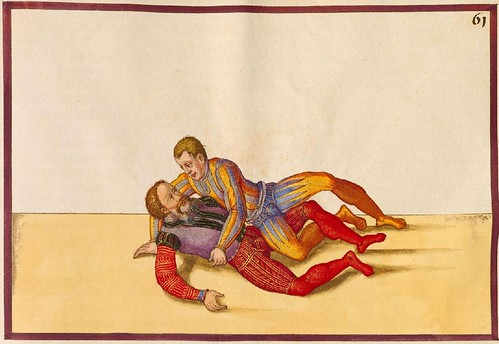 |
| Arms of the City and Republic of Fribourg, surmounted by a third shield, also oval-shaped arms of the Empire. It is surmounted by the imperial crown. The whole is supported by two lions, one holding a sword in dexter and sinister than a world |
 |
| The arms of bailiwicks, from left to right from the top middle: Corberss (Corbières), Remond (Romont) Ruw (Street) Staffys (Estavayer), Boll (Bulle) Wiypingen (Vuippens) Uberstein (Surpierre) Bossonens (Bossonnens), Chastel-[D] ionized (Châtel-St-Denis), Attalens, S. Albin (St. Aubin), Talbach (Vaulruz), Font, Cugie (Cugy) Plaffeyen (Plaffeien) Jounn (Bellegarde) Corsery (Corserey), Orbach (Orb), Granson (Grandson) Grasburg (Grasbourg) Murtten (Morat), Alten [r] Yff (Hauterive) Chinaulx (Chenaux) 1 , Montenach (Montagny) Gruningen (Everdes) Illingen (Illens) Bridge and Gryers (Gruyère) |
 |
| Banner of the City of Milan: Round medallion in the center of which is placed Ambrose , the patron saint of Milan, in priestly garb, holding a whip in his right hand and the stick in his left hand, he is surrounded by allegories of the cardinal virtues: Justice, Strength, Prudence and Temperance. Part of the medallion bears the following legend: + COMVNITAS ⋆ MEDIOLANI in Roman capitals (Enlarge the image to observe letters) |
In 1646, the Petit Conseil or Executive Council of Fribourg, equivalent to the Canton of Fribourg, commissioned Pierre Crolot (did my best but couldn't find complete BIO, so far) an artist from the Free County of Burgundy, with the task of illustrating the flags and banners that were carried by Fribourg troops on campaigns in Sundgau, Burgundy, and Italy (at the end of the 15th century and the beginning of the 16th century), which were then displayed in the church of St. Nicholas.
These objects themselves disappeared without a trace in 1822, with the exception of two ceremonial vestments of the Order of the Golden Fleece (which are now on display in the castle of Gruyere). The book contains a total of 240 illuminations: three frontispieces show the city’s coat of arms, its bailiwick, and the coats of arms of the members of the Executive Council; 30 tables reproduce the banners, and 9 tables portray Burgundian clothing items and tapestries. The “Book of Flags” is an art object, valuable as a record of objects that have been lost, as well as a witness to the glory of the Fribourg troops in the late middle ages.
Technical details about the codex: Parchment: 42 plates, size 31 x 48 cm. Original title (classic german): "Fahnenbuch". Hosted at Archives de l'Etat de Fribourg (Freiburg), and also well known (even best) as "Le Livre des Drapeaux de Fribourg"
 |
| Banner of Milan (II) Round medallion in the center of which is placed St. Ambrose, in the same suit and the same attributes, but it is not surrounded by allegories. The medallion is placed in the center of a white cross occupying the whole field of the flag. In each canton is inscribed the motto libertas, lowercase Gothic, surmounted by a crown. |
 |
| Flag of Pierre de Gingins, lord of Châtelard, killed in June 1476 defending Tour de Peilz against the Bernese |
 |
| Etendard of Louis XII, King of France and Count of Pavia |
